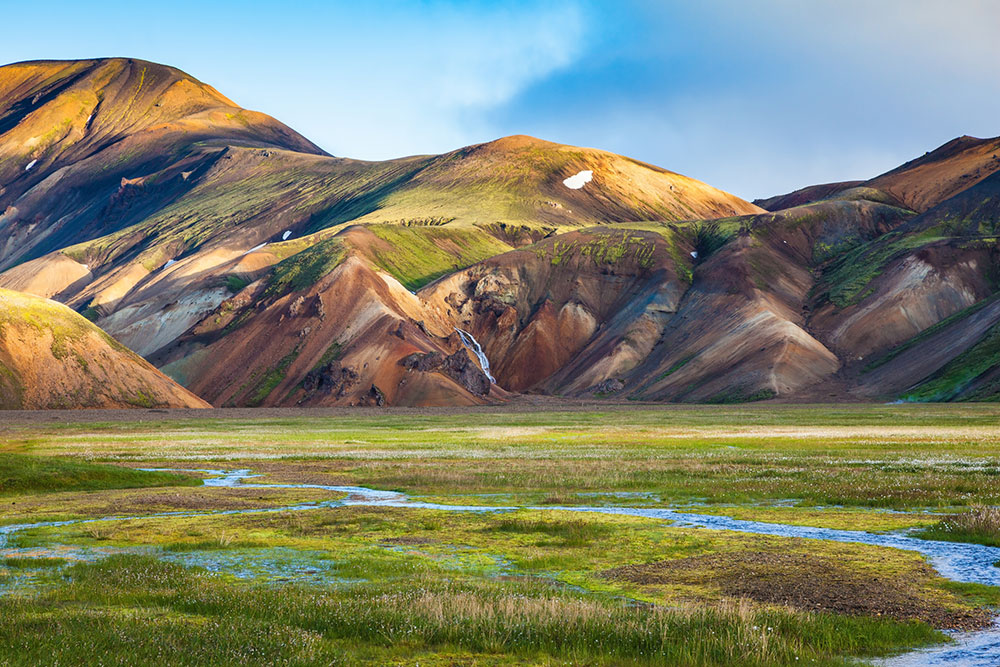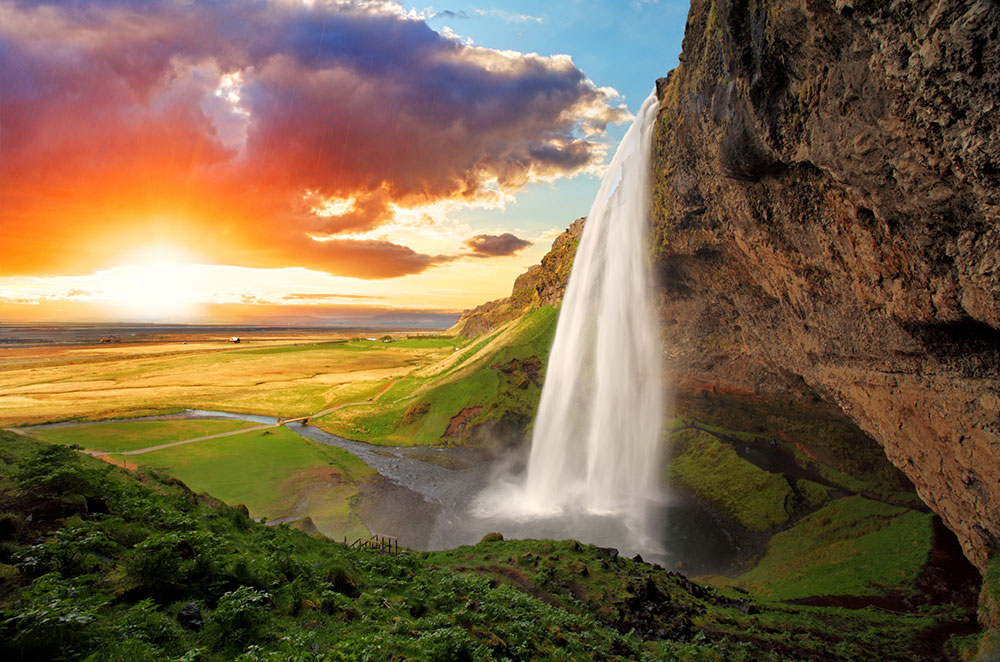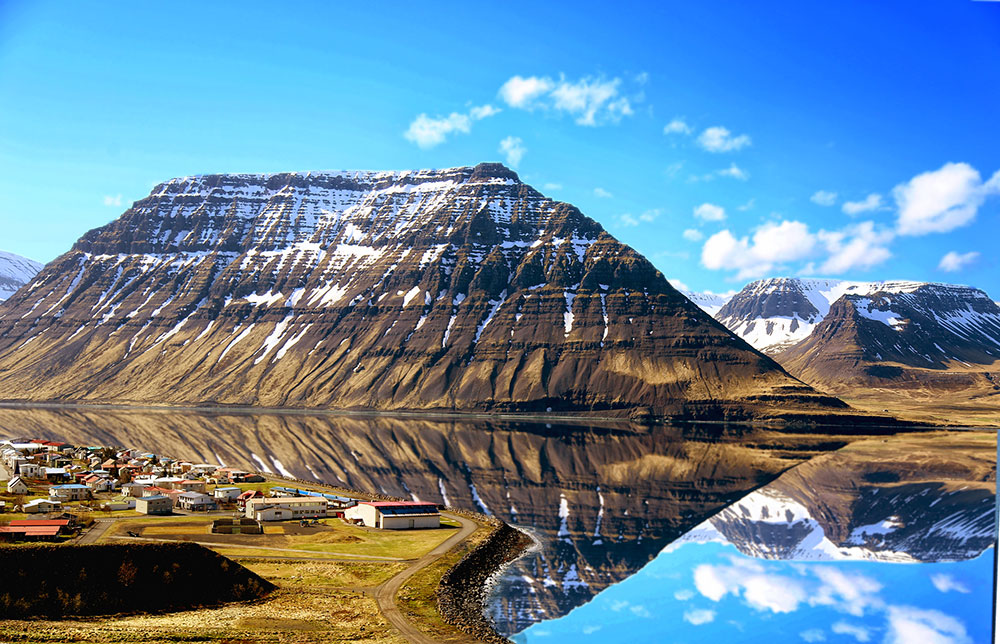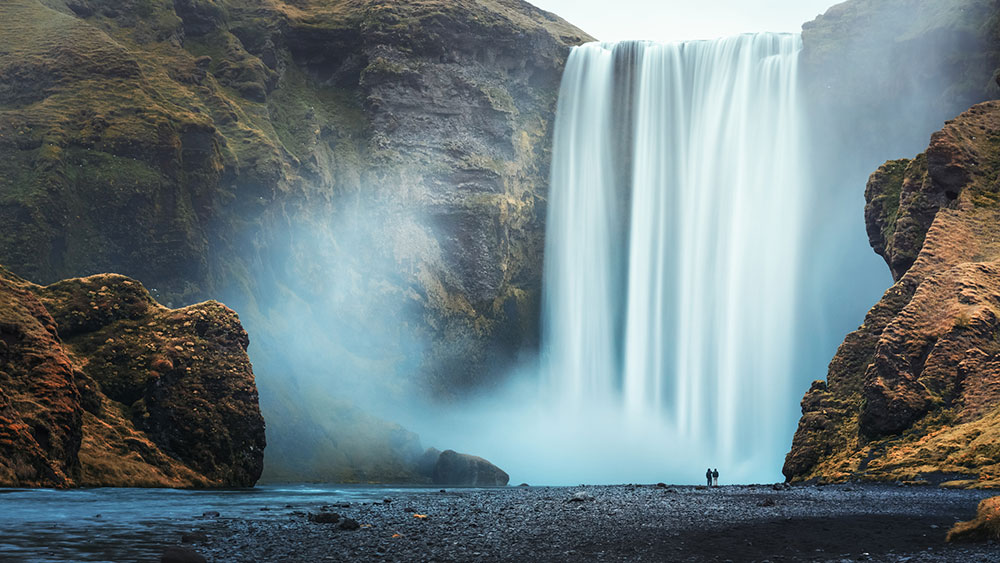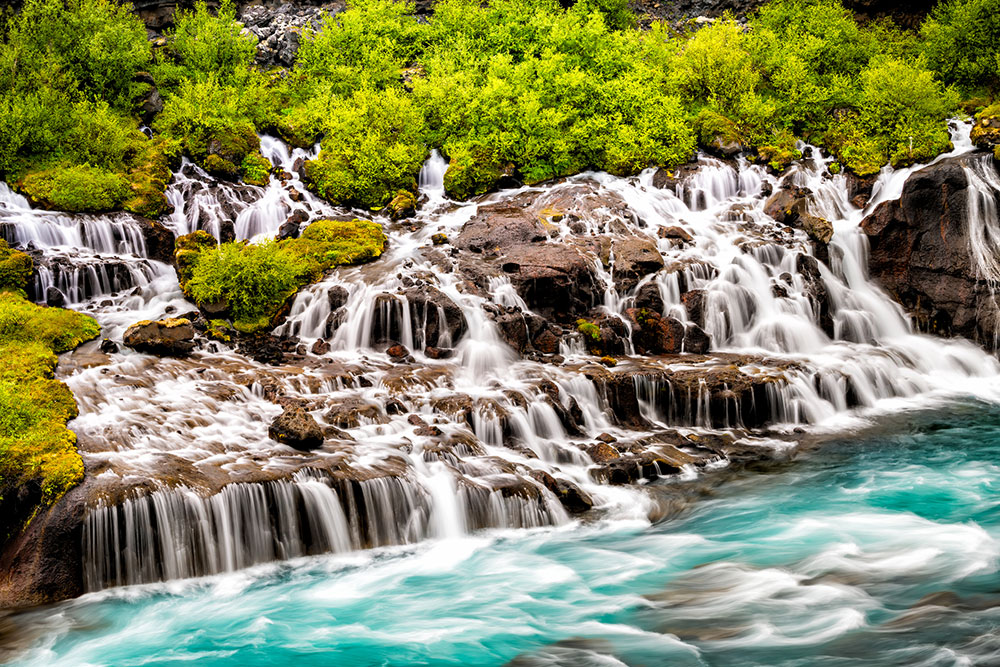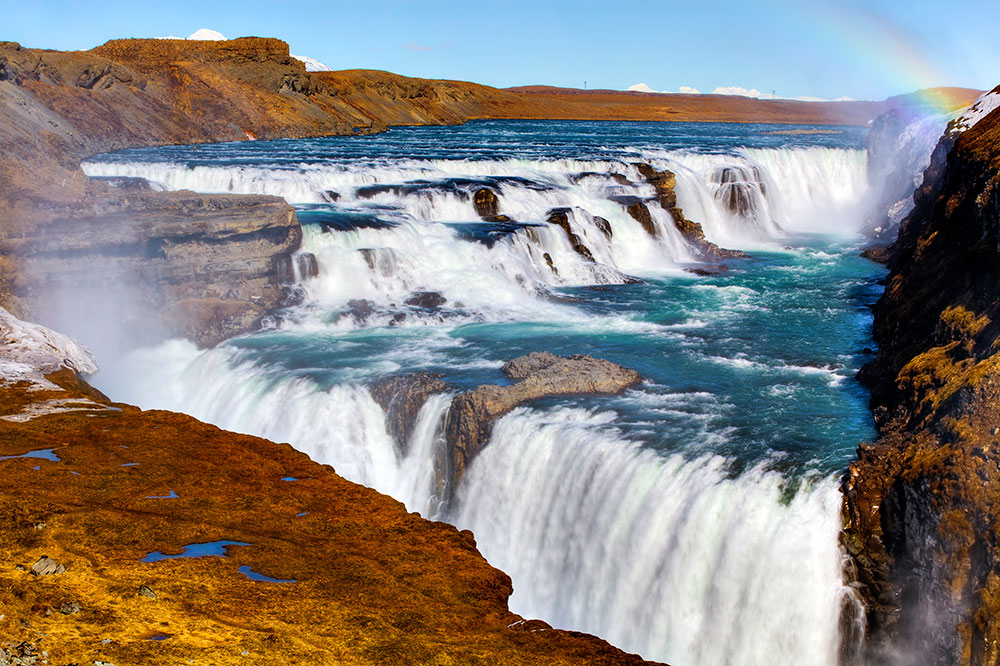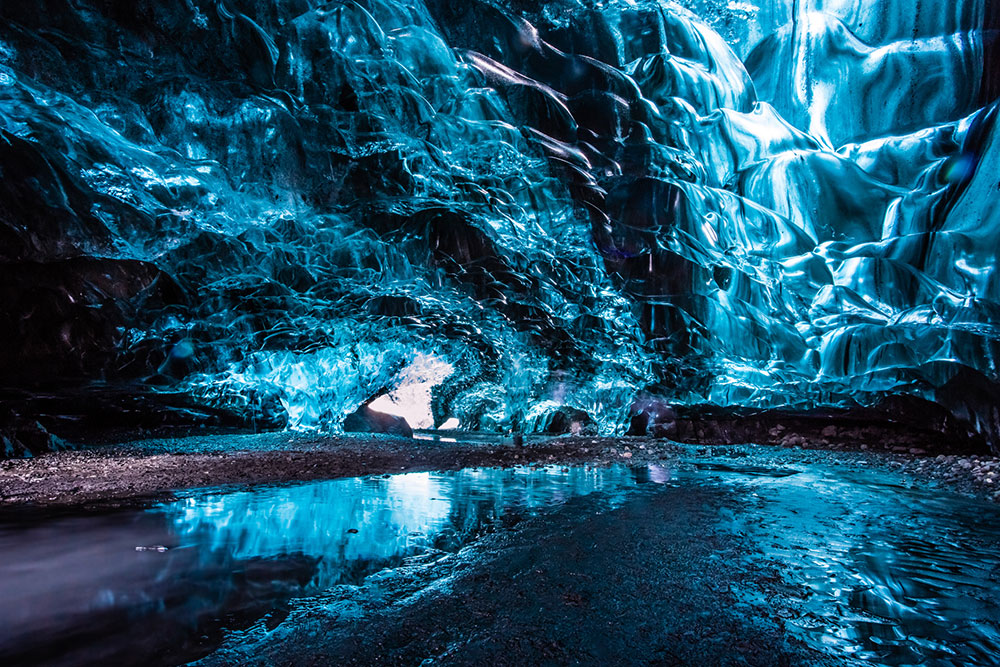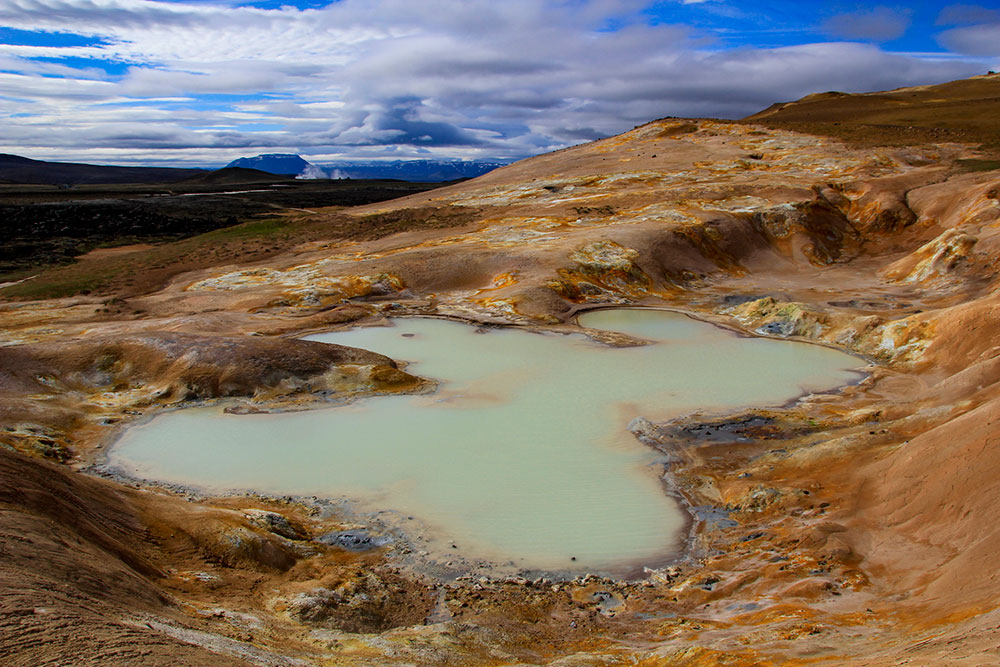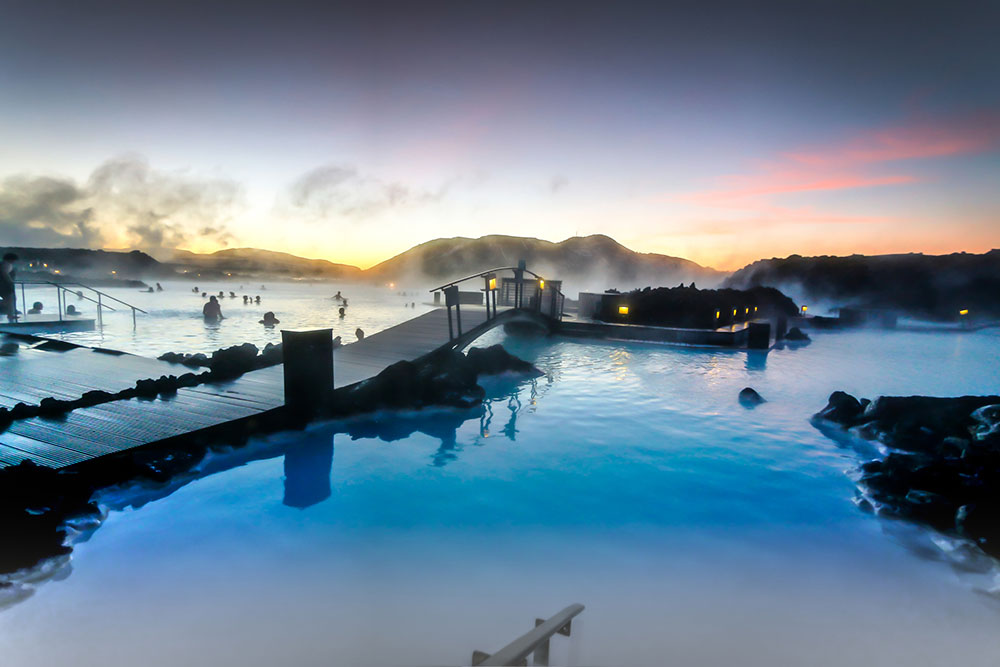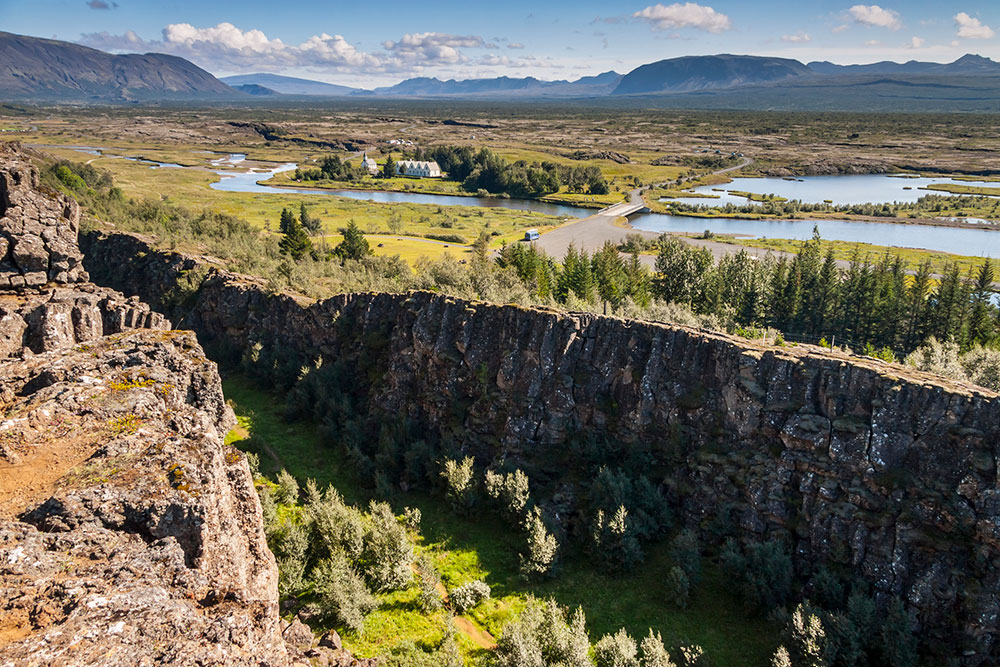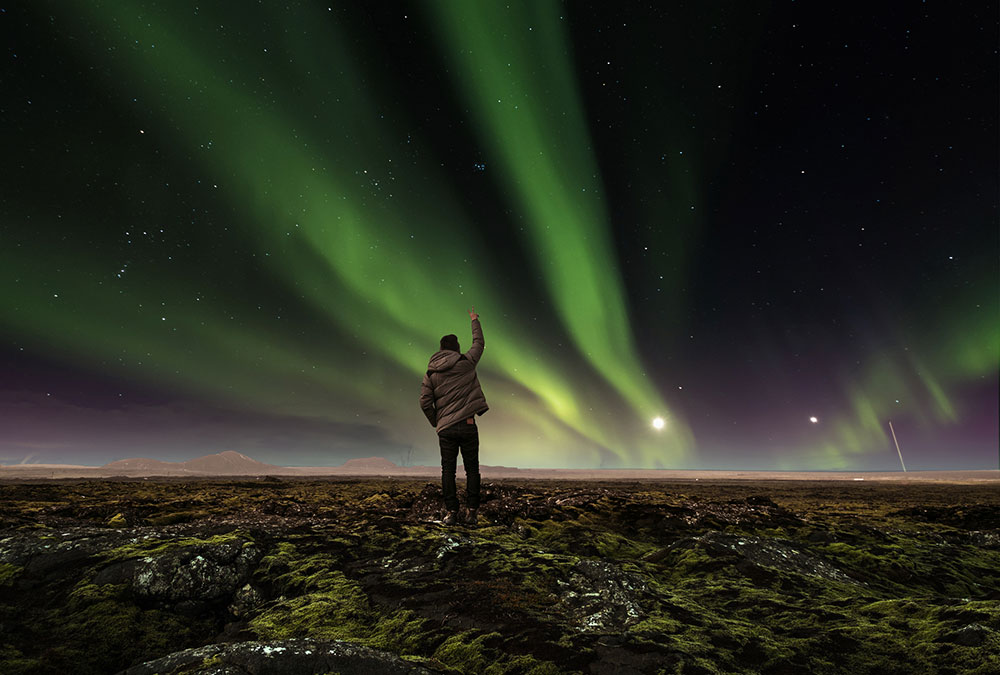This small, remote country near the arctic circle is one of the hottest tourism spots in the world. Why? The most beautiful places in Iceland are home to very unique landscapes. Everything in this country has a larger-than-life feel, and its dramatic natural features are second to none. Whether you visit in summer or during winter, there’s always outstanding beauty to behold. The huge volcanoes, crystal glaciers, numerous cascading waterfalls, and red sand beaches are among the awe-inspiring features to spot. With all these amazing places to see, it’s understandable that you would be at a loss of where to begin. That’s why we’ve tried our best to help you narrow it down to the must-see places to visit in Iceland. So, come with us on a virtual tour!
Jump to your favorite Icelandic travel destination:
Thingvellir National ParkThe Blue LagoonLake Mývatn Geothermal AreaVatnajökull Crystal CavesSkogar VillageGullfoss Golden FallsHraunfossar Lava FallsSkógafoss WaterfallWestfjordsSeljalandsfoss Waterfall Landmannalaugar Highlands
11 Must-see Destinations When You Visit Iceland
There’s no shortage of stunning things to see in Iceland, but the following are some of the most scenic places to explore.
1. Thingvellir National Park
The Þingvellir (Thingvellir) National Park is naturally rich and diverse, with a deep cultural significance to the people of Iceland. The park is part of Iceland’s tourist Golden circle. Visitors flock to its wide valleys and plains to view unrivaled scale and beauty, so no wonder it’s a national landmark and a UNESCO World Heritage Centre. Moreover, the Thingvellir National Park area is the wellspring of the nation of Iceland. Here chieftains would meet to discuss economic and political matters. The annual parliamentary meeting was known as the Alþing (Althing), which met here from 930 to 1798 CE. Traders met as well to exchange their goods. All these events rubber stamp Thingvellir National park as one of the perfect destinations to discover Iceland’s history. Thingvellir is not just home to Iceland’s first parliament, but is also a highly volcanic region. It lies between the Eurasia and North America continental plates. When you visit Iceland here, you can take a walk between two continents on the Almannagjá canyon. Down the canyon is a crack formed by the drifting tectonic plates. As a result, this area has some of the world’s purest glacier water. Daredevils can dive into the drift between the two continental plates to depths of up to 100 meters.
2. The Blue Lagoon
Iceland is a land of ice and fire, where geothermal activity meets a glacial climate. Its hot springs are legendary, bringing in tourists by the droves. And the Blue Lagoon is the island’s most popular tourist destination. Savvy travelers call it a tourist trap, with its higher than usual entrance fees and overpriced amenities. Unfortunately, it also has lots of tourists milling around it. That said, the Blue Lagoon is still exquisite, and provides a surreal paradise you can’t find easily find elsewhere. The Blue Lagoon in the Reykjanes Peninsula is a geothermal spa formed back in 1976 by the Svartsengi power plant production process. Therefore, it is not a natural spring, but an artificial pool of warm water drilled from the power plant’s operations. It is, however, clean water–and said to have healing properties. Its proximity to Iceland’s capital Reykjaví and the rich skin nourishing properties of its water makes it one of the most visited spots in Iceland. The Blue Lagoon is also close to the Keflavík International Airport. A short 15-minute drive from the airport, the Blue Lagoon is the perfect tourist entry and exit point. That said, getting into the Blue Lagoon needs a lot of planning; you might need to book days or weeks in advance to get in. However, once you are in this pseudo-natural wonder, you will enjoy immersing yourself in its milky blue water surrounded by dark lava fields and eerie grey creeping moss.
3. Lake Mývatn Geothermal Area
The Lake Mývatn Geothermal Area is home to the serene Mývatn Nature Baths. Lake Mývatn itself is in the northeast region of the island nation and is only 65 miles (105 km) from the arctic circle. The Lake is one of the continent’s greatest geographic marvels, and also one of the most beautiful places in Iceland. Visitors who find the Blue Lagoon too busy and crowded for their taste will love the Mývatn Nature Baths. Like the Blue Lagoon, these baths are also manmade and have alluring blue water pools. While not as large as the Blue Lagoon, its waters are as healing and as toasty warm. At the bottom of the lagoon are gravel and sand and convenient underwater benches. Around the geothermal area are diverse natural phenomena such as the bubbling mud pits and seething fumaroles around Mount Námaskarð. And at Dimmuborgir, you will find a lava fortress said to be the home of Iceland’s evil Santas (aka, Yule Lads).
4. Vatnajökull Crystal Caves
Vatnajökull is Europe’s largest glacier, covering 14% of Iceland’s landmass. Under the glacier are ten volcanoes, eight of which are submerged under the glacier, with two of those being Iceland’s most active volcanoes. These volcanoes erupt on occasion to form subglacial lakes that also burst to create a jökulhlaup or flood. Vatnajökull is not just popular for its large size and sub-glacial lakes but its numerous glittering Crystal Caves. It has lots of hidden ice caves and is perfect for explorers. It’s a breathtaking experience to traverse such utterly alien ice cathedrals–one you won’t be likely to forget ever. The Vatnajökull National Park surrounds the glaciers and is home to reindeer and lots of waterfalls that include the Selfoss and the Svartifoss waterfalls.
5. Skogar Village
This little village in South Iceland belongs on the page of a fairy tale book. They’re not quite hobbit houses, but they’re close. Skogar village has the cutest turf top homes you ever did see. These charming little houses are part of the Skogar village museum. Their sod roofings display Iceland’s historical architectural style and blend excellently with the landscape that surrounds them. Skogar village is only three miles away from the splendid Skógafoss waterfall, renowned for its double rainbows on a sunny day.
6. Gullfoss Golden Falls
In the summer months, the Iceland has an overload of melting snow, which feeds some of Europe’s wildest rivers. These rivers, in turn, create breathtaking waterfalls such as Gullfoss. Foss is the Scandinavian name for falls; Gullfoss, or the “golden fall,” is a popular tourist spot in Iceland. And, the waterfall is part of the Golden Circle, a much sought-after day tour by Iceland tourists. Flowing from the river Hvítá, Gullfoss falls are 32 meters high. It cascades down the gulley in two dramatic stages. Its initial short cascade has an 11-meter, three steps staircase-like drop. The second stage of the fall thunders 21 meters down the majestic Gullfossgjúfur canyon. In the late 20th century, Gullfoss’s owner Tómas Tómasson lent out the land to foreign investors who had plans to harness the fall’s power via a hydroelectric plant. Sigríður Tómasdóttir, Tómas’s daughter, set out to stop the construction of the hydroelectric plant and was caught up in a protracted court battle in a bid to save the beauty of the waterfall. Lore has it that Sigríður Tómasdóttir threatened to throw herself off the waterfall, should she lose the case. The investor eventually withdrew the court case thanks to Sigríður’s efforts. As a result, she is recognized as Iceland’s first environmentalist.
7. Hraunfossar Lava Falls
Most Icelandic waterfalls are roaring giants flowing in power and majesty. However, the Hraunfossar lava falls are different. They are gentle and almost fairy-like in beauty. The Hraunfossar waterfalls are rivulets that flow out of a lava field at Hallmundarhraun in West Iceland. Calm and bewitchingly beautiful, their milk-white brooks flow through the lava rock’s porous edges on their way to the Hvítá river. The numerous white falls run down a 900-meter-wide cliff creating an awe-inspiring sight making this one of the most beautiful places in Iceland. The Hraunfossar falls region once had violent eruptions and has hidden caves such as the Víðgelmir. The natives say that Hraunfossar was once upon a time inhabited by trolls.
8. Skógafoss Waterfall
Iceland is home to at least 200 named waterfalls, but each Icelandic waterfall has its unique allure. Skógafoss lies in the southern region of Iceland. It is one of the most powerful waterfalls in the area. The Skóga River waterfall drops 60 meters over cliffs that were once part of Iceland’s coastline. However, the coastline has now receded seaward by a distance of 3.1 miles (5km), creating a grand sea cliff theatre for the majestic waterfall to fall over. Skógafoss’s waters come from the Myrdalsjokull and Eyjafjallajokull glaciers, a factor that contributes to the fall’s great power. Skógafoss creates a dense veil of water that you can walk close to if you do not mind its cloud of spray. The sound from the falls is voluminous as it crashes to the black sand below it. Skógafoss’s must-see is its double rainbows on sunny days. It is a perfect photography zone in winter, as the Northern Lights illuminate the sky.
9. Westfjords
Westfjords is a hidden gem in Iceland’s Northwest. Travelers in the know visit Westfjords to get away from busy Reykjavik. Westfjords has charming, laid-back beach towns, gorgeous landscapes, and lots of flora and fauna. Visit Westfjords in summer when it is more accessible. Winter makes it much harder to get to some of Westfjord’s most beautiful places. It is home to the thunderous falls of the Dynjandi and Reynisfjara, its black sandy beach. The beautiful pink sand beach of Rauðasandur is also a gem here.
10. Seljalandsfoss Waterfall
Seljalandsfoss is one of the most beautiful places in Iceland. It is also the most picturesque of the Nordic island nation’s waterfalls. The Seljalandsfoss waterfall is on Iceland’s south coast. It has a 200 feet (60 meters) drop as it makes its way down the Seljalands River, a tributary of the Eyjafjallajökull Glacier. It is not only a captivating beauty, but it is distinctive in that you can walk around its magnificent falls. The falls are narrow and leave a pathway around the cliffs that circle them. Behind the falls is a large cavern that is a must-see. Travelers that dare the mist and damp state of the pathway and its slippery rocks are rewarded with the most outstanding view of the fall. The authorities have also placed floodlights behind the water curtains around the cavern to provide lighting when the midnight sun fades. The backdrop that the combination of the water, rock face, and lights create is a sight for sore eyes. But hike up the top of the Seljalandsfoss, and you will have premium photographic scenes of the ocean and the coast. Seljalandsfoss is open to visitors in winter and summer.
11. Landmannalaugar Highlands
Landmannalaugar in the Southern Highlands of Iceland is a large area with unique, otherworldly beauty. It is a geological wonder with colorful mountains, a geothermal oasis, and hot lava fields. Landmannalaugar is a much-beloved hiking and photography spot; while photos themselves look like impressionistic paintings. It isn’t easy to believe that such an eclectic yet harmonious array of colors exists naturally on a landscape on earth. Yet, this rainbow of muted colors does exist in Landmannalaugar. These remote Icelandic highlands have a mix of Rhyolite browns and yellows on their slopes. Hot reds and purples from the iron-rich soils mix with the sharp whites of an oil painting to contrast the dark and light green of moss that lies everywhere you look. To balance the look is the black of the lava fields stretching for miles on end. Then there is a valley with a warm pool, hemmed in by colorful hills.
Reasons Why You Should Visit Iceland
While Iceland has beautiful geographic and geological attractions, it also has features endemic to this island. Some of them include:
The Aurora Borealis
This island country has so much to offer both at night and in the daytime. The northern lights have captivated man’s imagination for centuries, and Iceland is the best place to view them. The Aurora Borealis’s celestial beauty is visible under Iceland’s light pollution-free clear and dark skies between September and April. Related Reading: Sweden Travel Guide
Midnight Sun in Summer
Iceland is the perfect summer spot. The sun here barely sets most summers between May and July. At this time, the sun sets at midnight and is up shining again by 3 am. On June 21, there is a beautiful summer midnight sun–and some amazing summer solstice celebrations if you’re with the right people.
It’s a Natural Endurance Arena
Iceland is the perfect spot for challenging hikes, cycling, and trekking experiences. You can go up a dormant volcano, up and down its many glacier environments, or dive Thingvellir’s two continents divide.
Friendly People
The Icelanders are some of the friendliest and most welcoming people on earth. The locals love tourists and love to share their island’s beauty with travelers.
Unique Cuisine
Generally, Icelanders love fresh food straight from their surroundings. So you will have lots of creamy cheese, fresh seafood, and lamb dishes to feast on. Will you be able to brave the olfactory frontiers presented by Hákarl? You’ll only know if you visit Iceland.
Wrapping Up Our Virtual Visit to Iceland
There are a thousand and one reasons why you should take a trip to Iceland. This list of the most beautiful places in Iceland will introduce you to features so unique that you will keep going back to the island to discover more hidden gems.
